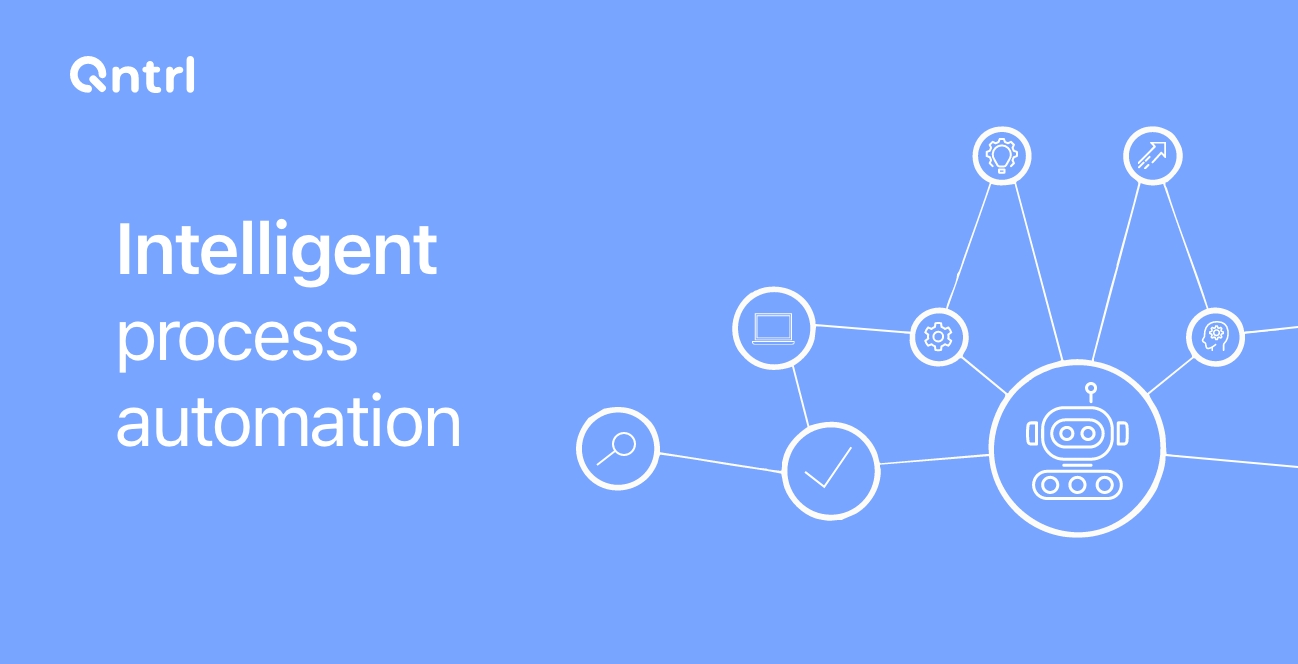Enterprise social networking: Empowering people, processes, and performance
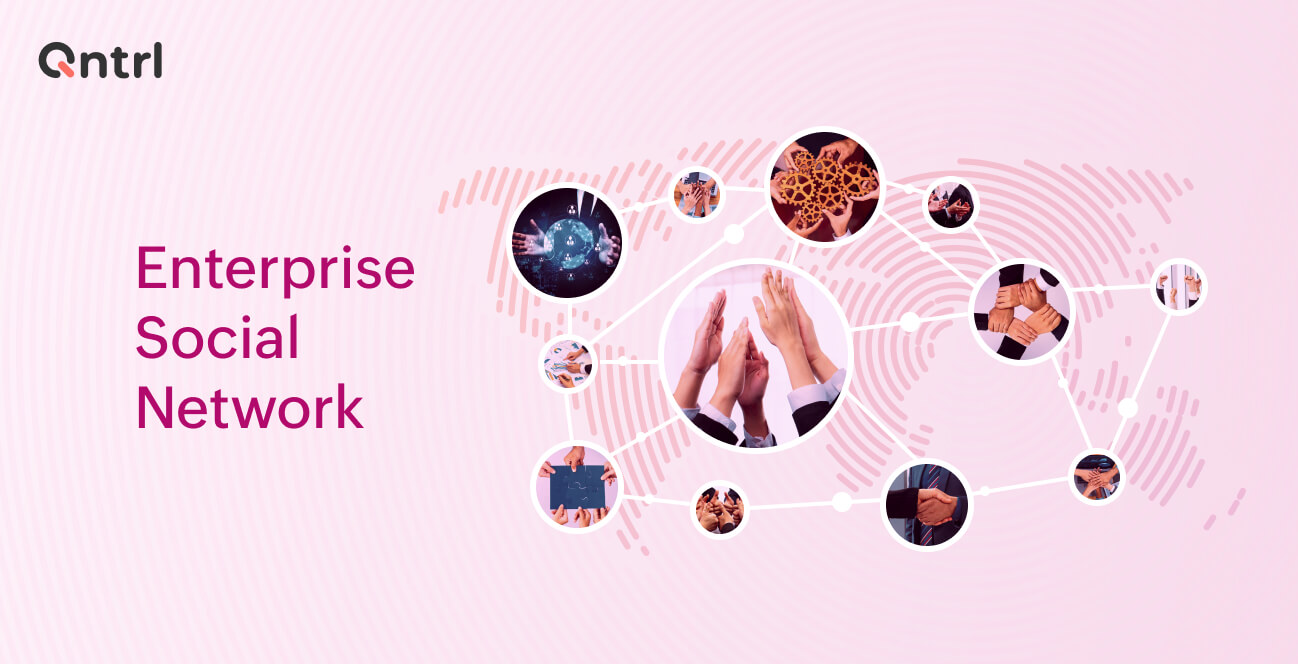
Enterprise social networking (ESN) has evolved significantly beyond its origins as a digital noticeboard or internal messaging tool. Today, it plays a critical role in enabling connected, responsive, and knowledge-driven organizations. Organizations are now using ESNs to address distributed workforces and hybrid models by keeping employees informed and enabling seamless collaboration while preserving institutional knowledge and building strong internal communities.
Why enterprise social networking matters today
The transition to knowledge work and remote teams and cross-functional collaboration requires companies to adapt their communication methods. The exclusive use of email threads and meetings and chat tools leads to communication silos. Enterprise social networks offer a persistent, contextual, and searchable alternative.
Impact of modern ESNs across people, processes, and performance
Today's enterprise social networks do much more than keep employees informed—they drive cohesion, streamline processes, and fuel performance across teams.
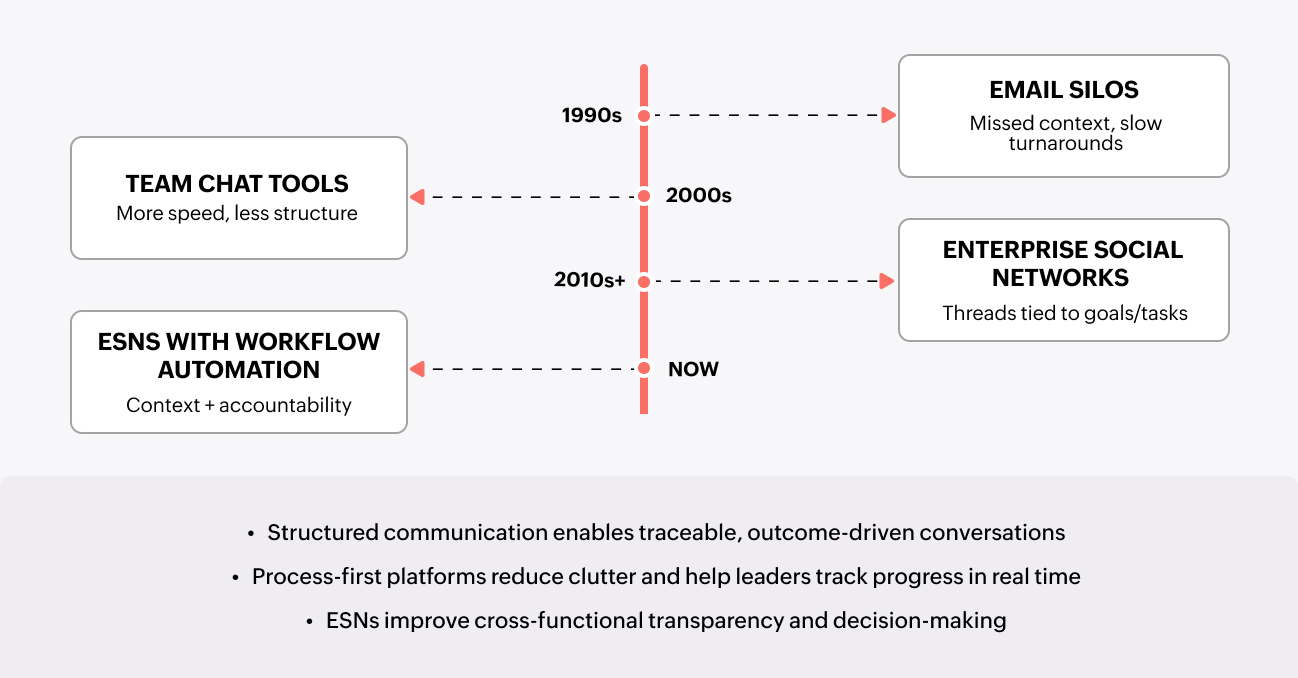
A modern ESN lets teams:
- Share updates, milestones, and decisions in one place
- Maintain visibility across functions without manual follow-ups
- Create a living, searchable knowledge base of work-related content
- Engage in asynchronous discussions that don't interrupt deep work
Unlike public social platforms, ESNs are built with structure, control, and business context in mind. Posts can be categorized, archived, linked to workflows, and audited—making them powerful enablers of organizational intelligence.
The evolution of internal collaboration
Early corporate communication tools were either too rigid (like intranets) or too informal (like consumer chat apps). Neither offered the governance or traceability needed for business environments. ESNs fill that gap by combining the flexibility of social interaction with the accountability of enterprise systems.
ESNs enable open discussions between employees across different departments and organizational levels whereas email maintains private and isolated communication. ESNs maintain structured conversations while chat platforms produce unorganized and short-lived content. The traditional tools require administrators to maintain control but ESNs give staff members the power to share knowledge and engage organically.
Real-world use cases of ESNs in action
Enterprise social networks shine across a range of business functions:
- Product development: Collecting feedback from sales and support teams, discussing roadmap decisions, and sharing early prototypes
- Onboarding and training: New hires can browse past project discussions, FAQs, and guides shared across the network
- Customer success: Cross-team discussions around customer pain points, retention strategies, and experience wins
- HR and culture: Recognizing employee achievements, sharing policy updates, and inviting participation in wellness or diversity programs
When implemented thoughtfully, ESNs improve transparency, reduce information bottlenecks, and ensure that no critical context is buried in private messages or scattered tools.
ESNs vs. legacy communication: what's changed, and why it matters
The transition to an enterprise social network requires companies to abandon their previous reliance on email threads and static intranets and ad-hoc chat systems.
What makes a contemporary ESN different from other tools? They generally deliver persistent searchable role-aware collaboration which exceeds traditional tools for one.
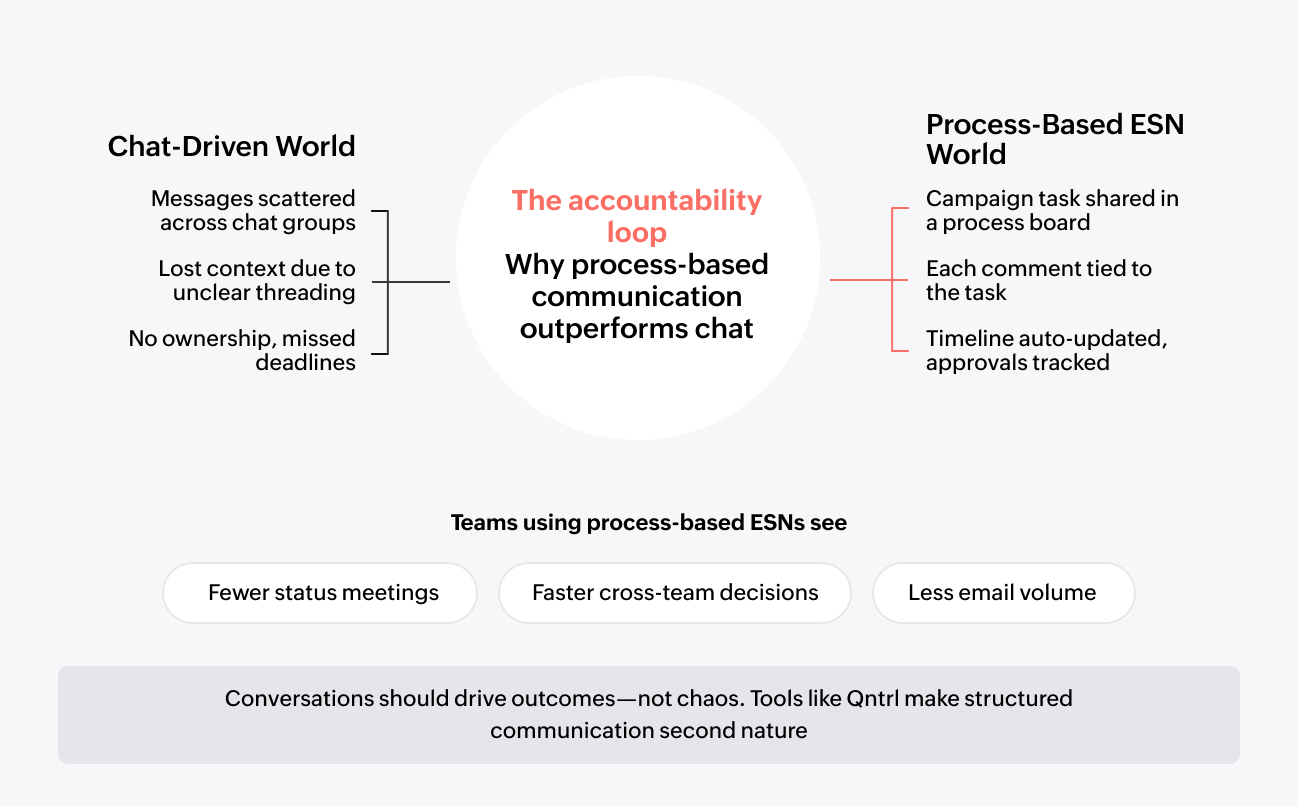
While chat apps serve well for quick updates and urgent interactions, they aren't designed for retaining knowledge, scaling across departments, or driving accountability. ESNs, on the other hand, offer persistent threads, searchable content, and structured discussions—but even they can fall short when it comes to translating conversations into business outcomes.

By combining an ESN with a workflow orchestration platforms, organizations unlock a system that connects the what, who, and how of work. Here's a brief comparison:
Feature/Capability | Chat Tools | ESN | ESN + Workflow | |||
Real-time messaging | ✅ |
| ✅ |
| ✅ | |
Searchable, persistent context | ❌ |
| ✅ |
| ✅ | |
Knowledge archiving & discoverability | ❌ |
| ✅ |
| ✅ | |
Structured discussions across teams | ❌ |
| ✅ |
| ✅ | |
Tied to workflows and task ownership | ❌ |
| ❌ |
| ✅ | |
Auditability and traceability | ❌ |
| Limited |
| ✅ | |
Triggers, approvals, and SLAs | ❌ |
| ❌ |
| ✅ |
This model helps teams avoid a fragmented toolset by layering real collaboration over structured operations—without adding complexity. Instead of juggling three platforms for discussion, tracking, and action, teams can stay aligned, responsive, and accountable in one connected ecosystem.
Embedding workflows into your social network
Where ESNs excel in communication and visibility, workflow orchestration brings structure, accountability, and actionability. Tools with powerful workflow orchestration allow organizations to tie updates and conversations to real business processes.
For example:
- A product idea shared on the ESN can trigger a structured workflow for evaluation and prototyping.
- A compliance discussion can link directly to audit-ready documentation and approval chains.
- A customer escalation post can initiate a cross-functional resolution process with timelines and responsibilities clearly defined.
Organizations prevent conversations from becoming dead ends by combining the social context of ESNs with the rigor of workflow platforms. Every idea, issue, or insight can be routed into action.
Turning conversations into outcomes: the power of connecting ESNs with workflows
Ideas, requests, and insights often surface in casual internal discussions—but without a system to act on them, they go nowhere.
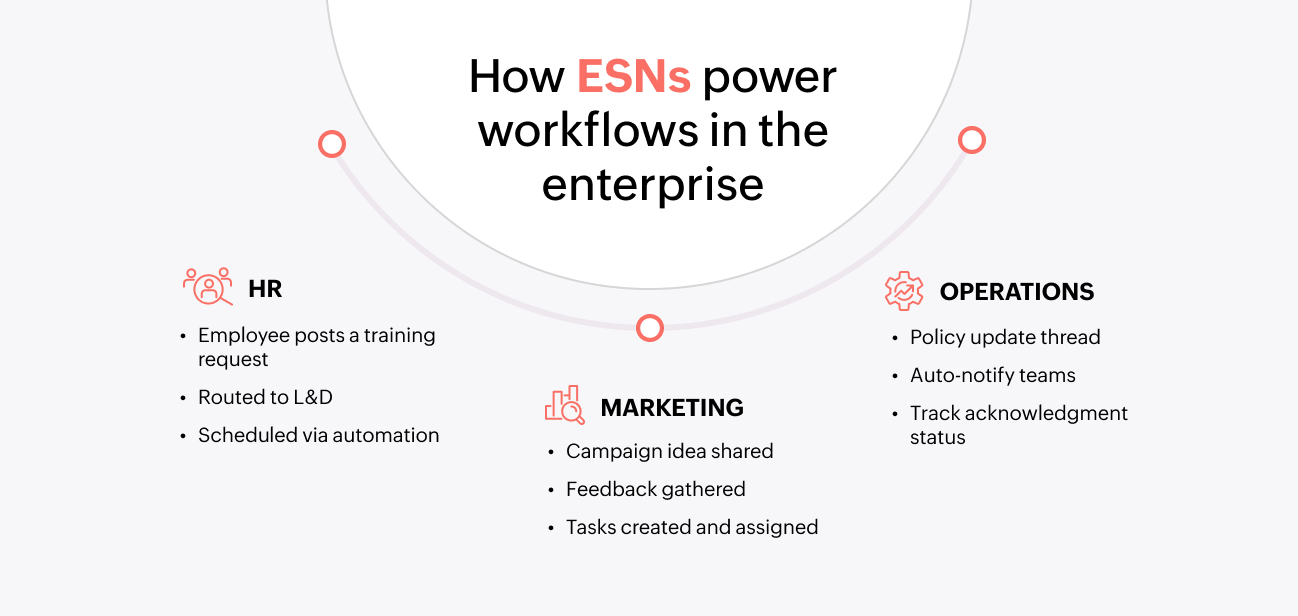
Measuring the value of ESNs
To ensure that your enterprise social network contributes meaningfully to work outcomes, consider these value indicators:
- Engagement rates: Are employees actively posting, reacting, and collaborating?
- Time-to-resolution: Are issues raised in ESNs being addressed faster through better visibility and routing?
- Cross-departmental interaction: Are teams interacting beyond their silos?
- Knowledge reuse: Are past discussions being referenced, linked, or used in decision-making?
Tracking these metrics helps determine if your ESN is just another tool or a genuine catalyst for smarter work.
Common pitfalls to avoid
Despite their benefits, ESNs can fall flat without the right environment. Common challenges include:
- Lack of participation: Without visible executive involvement and team encouragement, adoption may stall
- Information overload: Poor tagging and categorization can make ESNs noisy and hard to navigate
- Disconnected systems: If the ESN doesn't integrate with tools like Qntrl or your existing knowledge base, it becomes another silo
To succeed, organizations must treat their ESN like any other strategic initiative—with clear ownership, thoughtful governance, and continuous iteration.
ESNs as a driver of culture and agility
Beyond tools and workflows, ESNs shape the human side of work. They reflect an organization's transparency, inclusiveness, and responsiveness. When leaders share updates openly, employees engage in open problem-solving, achievements are recognized publicly, and a culture of collaboration and trust is strengthened.
In fast-moving environments, ESNs also reduce dependency on meetings and synchronous interactions. Teams across time zones or schedules can still stay aligned and contribute meaningfully without being in the same room or call.
Why Qntrl excels beyond traditional collaboration tools
While many collaboration platforms focus primarily on communication, Qntrl distinguishes itself by integrating robust workflow orchestration capabilities, ensuring that conversations lead to actionable outcomes.
Process-centric collaboration
Unlike tools that prioritize messaging, Qntrl places processes at the forefront. This approach ensures that tasks are not only discussed but also systematically executed, reducing the gap between planning and implementation.
No-code customization
Qntrl empowers teams to design and modify workflows without the need for extensive coding knowledge. This flexibility allows for rapid adaptation to changing business needs, fostering innovation and efficiency.
Integrated workflow and communication
By combining communication with workflow management, Qntrl ensures that every discussion can seamlessly transition into a structured process. This integration minimizes information silos and enhances accountability across teams.
Application use-cases
- Loan processing: Automating tasks such as EMI calculations and certificate generation, leading to faster approvals and compliance adherence.
- Content management: Facilitating content creation workflows from ideation to publication, ensuring timely and quality outputs.
- Customer support: Enhancing ticket management systems to prioritize and resolve issues efficiently, improving customer satisfaction.
By integrating Qntrl into your enterprise social networking strategy, you not only foster better communication but also ensure that every interaction contributes to tangible business outcomes.
A smarter way to connect work and people
Enterprise social networking is not about mimicking Facebook for the workplace. It's about enabling better decision-making, faster execution, and more engaged employees by connecting the dots between conversations and actions.
When paired with an orchestration platform like Qntrl, your ESN transforms from a communication layer into an operational backbone. Conversations don't just stay as chatter—they become inputs to structured, trackable workflows that drive real business outcomes.
Organizations that adopt this model will improve their collaboration and build a scalable, resilient foundation for growth in a hybrid and fast-changing world.
Enjoying your reading?
Enjoy organization and visibility too!
Qntrl can help you organise, control and improve production and projects in your team.




